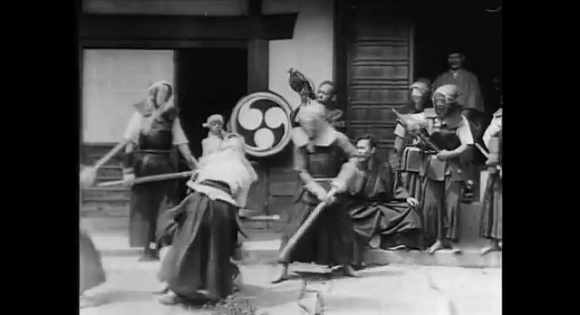
Kendo is a uniquely Japanese martial art. Like judo, karate, and aikido, this modernized version of a traditional art has numerous practitioners both in Japan around the world. And while some may approach it with more, um, zeal that others, it’s generally viewed as being more like chess than raw fighting.
But if you ever thought that kendo lacked in brutality or purely comedic tomfoolery, this 117-year-old video of a kendo practice session in Kyoto will put you in your place. And then smack you across the head with a big bamboo stick!
While kendo evolved over many centuries into the sport-like martial art we know today, there’s no doubt that it was, at one point, the domain of people whose jobs involved swinging large pieces of sharpened metal around. And so you might expect its practitioners to act accordingly, with absolute focus and deadly accuracy.
But you would be entirely wrong, as this video–the world’s first video recording of kendo from 1897–so clearly shows! It’s less highly trained warriors deftly parrying and counter-attacking and more a Buster Keason-esque garden brawl! Apparently, the video was originally recorded by a French film crew in 1897, as the introduction below shows.
The YouTube video descriptions also contains this information:
According to the deleted french narrator the film was shot in Kyoto during a kind of warming-up training of a kendo competition at the end of October 1897 by Constant Girel. Louis Lumière was apparently not satisfied with the work of Girel, for unknown reasons.
Well, we’re not sure why Lumière was unhappy with the video, because we found it pretty entertaining! For example, the scene features not a single pair of kendo practitioners fencing, but three groups who inadvertently crash into each other–and keep swinging unabated!
Also, while it’s hard to tell in the screenshots, one of the practitioners isn’t even weilding a shinai, the bamboo sword used in kendo! Instead, this fellow seems to be swinging a kusarigama, or chain-sickle!
These warriors are relentless even in practice–quarter is neither given nor requested even after one of them has been flung onto the ground. In fact, it almost looks as if everyone is just swinging at whomever happens to be in range!
It’s hard to capture the chaotic, frenetic energy of the video with screenshots, so if you’re at work (tsk, tsk!), be sure to come back and watch the video as soon as you can!
However, it looks like there’s a bit of controversy about the authenticity of the video, at least in the video comments. Now, obviously, no one should ever take YouTube comments too seriously, but we thought there were some salient points raised.
- One user, posting a message in both Japanese and English wrote: “This could be a staged work. Look at the arrangement of people, a conch shell, a drum. In early motion pictures of Lumiere, we can see this sort of dramaturgy a lot.”
- Another commenter seemed certain that the practioners were actually just extras: “These are just extras employed for filming. At the very least, they’re not experienced practitioners of kendo or kenjutsu (sword-fighting art which was a precursor to kendo), as you can clearly tell from their footwork.”
- One of the most engrossing aspects of the video is the hyperactive movement of the fighters, but it may be a trick of the videography, according to one commenter: “At that time, film was recorded at 18 frames per second, so playing it back at 24 frames per second, their movements look fast. I wonder if it was played back properly at that time.”
- Well, regardless of the veracity of the video, we completely agree with this guy! “Am I the only one who thinks this kind of looks fun?”
Here’s another of the Lumière Japan videos: A 19th-century Japanese family having some tea.
Finally, while not about Japan, this 1895 comedic short by the Lumière brothers is better than some Adam Sandler movies. We just had to share the laughs with our dear readers!
Though photography and videography still seem like relatively new inventions, we are incredibly grateful for the old but beautiful artifacts that can show us precisely what life was like at the turn of the 20th century. It’s almost as good as a time machine. It might even be better, since this way we’ll never run the risk of falling in love with any of our grandparents!
Sources: YouTube, Yahoo! Japan Topics
Images: YouTube

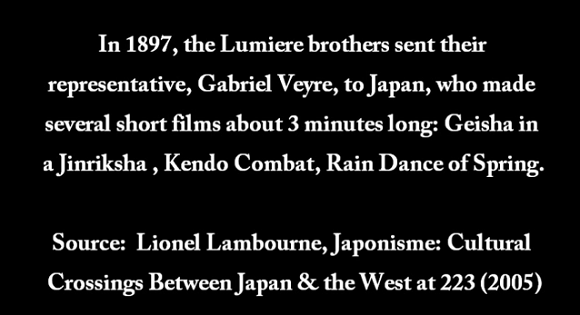
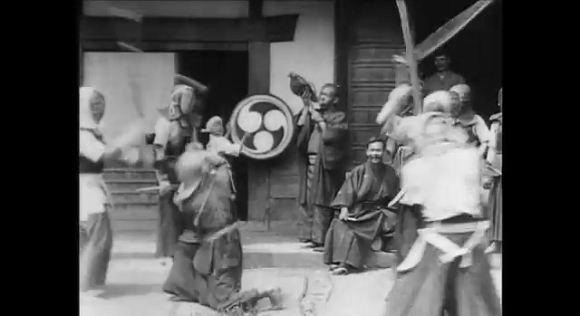
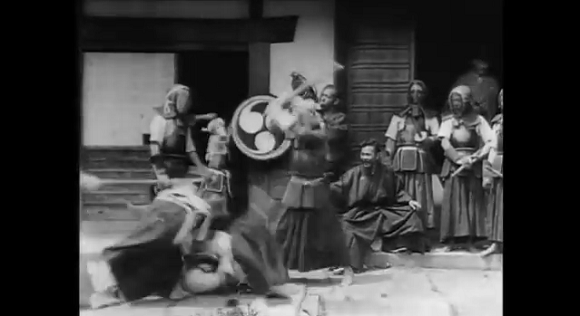
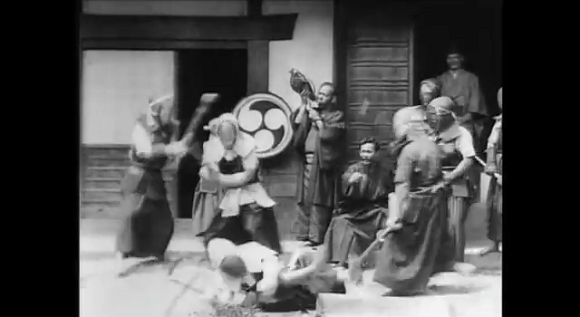
 Hilariously intense kendo match shows off the psychological side of the samurai sport 【Video】
Hilariously intense kendo match shows off the psychological side of the samurai sport 【Video】 EXO calls on the Force in their new Star Wars tie-in single【Video】
EXO calls on the Force in their new Star Wars tie-in single【Video】 Japanese high school kendo coach caught forcing students to pay birthday-tribute money
Japanese high school kendo coach caught forcing students to pay birthday-tribute money 5 Japanese women who can kick your ass (in martial arts)【Women in Japan Series】
5 Japanese women who can kick your ass (in martial arts)【Women in Japan Series】 Detailed explanation of Japanese armor?!? Show me!
Detailed explanation of Japanese armor?!? Show me! Japan’s new difficult-to-drink-from beer glass protects your liver, but it’s a brutal experience
Japan’s new difficult-to-drink-from beer glass protects your liver, but it’s a brutal experience How to order snacks on a Shinkansen bullet train in Japan
How to order snacks on a Shinkansen bullet train in Japan New samurai glasses are Japan’s latest weird must-have souvenir
New samurai glasses are Japan’s latest weird must-have souvenir “Deflowering” services for virgin women are now a thing in Japan, apparently
“Deflowering” services for virgin women are now a thing in Japan, apparently Doraemon found buried at sea as scene from 1993 anime becomes real life【Photos】
Doraemon found buried at sea as scene from 1993 anime becomes real life【Photos】 Burger King Japan suddenly adds Dr. Pepper and Dr. Pepper floats to its menu nationwide
Burger King Japan suddenly adds Dr. Pepper and Dr. Pepper floats to its menu nationwide Hello, cosmetics! Clinique teams up with Hello Kitty this summer for first-time collaboration
Hello, cosmetics! Clinique teams up with Hello Kitty this summer for first-time collaboration Princesses, fruits, and blacksmiths: Study reveals the 30 most unusual family names in Japan
Princesses, fruits, and blacksmiths: Study reveals the 30 most unusual family names in Japan High-fashion Totoro cuddle purse is like an elegant stroll in the forest【Photos】
High-fashion Totoro cuddle purse is like an elegant stroll in the forest【Photos】 Demon Slayer: Kimetsu no Yaiba gets new roller coaster attractions and food at Universal Studios Japan
Demon Slayer: Kimetsu no Yaiba gets new roller coaster attractions and food at Universal Studios Japan Nintendo history you can feel – Super NES, N64, and GameCube controllers become capsule toys
Nintendo history you can feel – Super NES, N64, and GameCube controllers become capsule toys “The most Delicious Cup Noodle in history” – Japan’s French Cup Noodle wins our heart【Taste test】
“The most Delicious Cup Noodle in history” – Japan’s French Cup Noodle wins our heart【Taste test】 Starbucks releases a cute Frappuccino and Unicorn Cake…but not in Japan
Starbucks releases a cute Frappuccino and Unicorn Cake…but not in Japan Kyoto Tower mascot termination reveals dark side behind cute Japanese characters
Kyoto Tower mascot termination reveals dark side behind cute Japanese characters McDonald’s Japan’s Soft Twist Tower: A phantom ice cream only sold at select branches
McDonald’s Japan’s Soft Twist Tower: A phantom ice cream only sold at select branches Yabai Ramen: What makes this Japanese ramen so dangerous?
Yabai Ramen: What makes this Japanese ramen so dangerous? Finally! Nintendo Japan expands Switch 8-bit controller sales to everybody, Online member or not
Finally! Nintendo Japan expands Switch 8-bit controller sales to everybody, Online member or not Japanese government wants to build luxury resorts in all national parks for foreign tourists
Japanese government wants to build luxury resorts in all national parks for foreign tourists To combat declining birth rate, Japan to begin offering “Breeding Visas” to foreigners
To combat declining birth rate, Japan to begin offering “Breeding Visas” to foreigners 10 things you should buy at 7-Eleven in Japan
10 things you should buy at 7-Eleven in Japan Studio Ghibli releases anime heroine cosplay dresses that are super comfy to wear
Studio Ghibli releases anime heroine cosplay dresses that are super comfy to wear Woman charged for driving suitcase without a license in Osaka
Woman charged for driving suitcase without a license in Osaka Studio Ghibli unveils My Neighbour Totoro miniature house model
Studio Ghibli unveils My Neighbour Totoro miniature house model Kyoto experiencing problems with foreign tourists not paying for bus fares, but not on purpose
Kyoto experiencing problems with foreign tourists not paying for bus fares, but not on purpose Fighting mild hunger with a Japanese soda that turns into jelly in the stomach【Taste test】
Fighting mild hunger with a Japanese soda that turns into jelly in the stomach【Taste test】 Studio Ghibli’s Howl’s Moving Castle tapestry unveiled in Japan for first time
Studio Ghibli’s Howl’s Moving Castle tapestry unveiled in Japan for first time McDonald’s new Happy Meals offer up cute and practical Sanrio lifestyle goods
McDonald’s new Happy Meals offer up cute and practical Sanrio lifestyle goods Sales of Japan’s most convenient train ticket/shopping payment cards suspended indefinitely
Sales of Japan’s most convenient train ticket/shopping payment cards suspended indefinitely Sold-out Studio Ghibli desktop humidifiers are back so Totoro can help you through the dry season
Sold-out Studio Ghibli desktop humidifiers are back so Totoro can help you through the dry season Japanese government to make first change to romanization spelling rules since the 1950s
Japanese government to make first change to romanization spelling rules since the 1950s Foreigner’s request for help in Tokyo makes us sad for the state of society
Foreigner’s request for help in Tokyo makes us sad for the state of society Ghibli founders Toshio Suzuki and Hayao Miyazaki contribute to Japanese whisky Totoro label design
Ghibli founders Toshio Suzuki and Hayao Miyazaki contribute to Japanese whisky Totoro label design Tokyo’s most famous Starbucks is closed
Tokyo’s most famous Starbucks is closed Anime con aboard aircraft carrier attracts moe warships of all kinds, from the cute to the manly
Anime con aboard aircraft carrier attracts moe warships of all kinds, from the cute to the manly Chinese period drama mannequin challenge is worth stopping to take a look at 【Video】
Chinese period drama mannequin challenge is worth stopping to take a look at 【Video】 Real-life Fruit Ninja! Watch Isao Machii slice up flying fruit like a boss 【Video】
Real-life Fruit Ninja! Watch Isao Machii slice up flying fruit like a boss 【Video】 Freaky cube shows when anime pillows aren’t terrifyingly pervy, they’re just terrified
Freaky cube shows when anime pillows aren’t terrifyingly pervy, they’re just terrified Thomas the Tank Engine’s video visit to Japan is more Japanese than life in Japan
Thomas the Tank Engine’s video visit to Japan is more Japanese than life in Japan Is that a giant sword in your pocket or are you just happy to see me?【Video】
Is that a giant sword in your pocket or are you just happy to see me?【Video】 Studio Ghibli receives honorary Palme d’Or at Cannes Film Festival 【Videos】
Studio Ghibli receives honorary Palme d’Or at Cannes Film Festival 【Videos】 Who needs a real weapon? Salaryman makes awesome FX battle video using a traffic cone【Video】
Who needs a real weapon? Salaryman makes awesome FX battle video using a traffic cone【Video】 Beautiful old footage shows “God of Judo” Kyuzo Mifune gracefully defeat young challengers【Video】
Beautiful old footage shows “God of Judo” Kyuzo Mifune gracefully defeat young challengers【Video】 Who are you calling “cute”!? 7-year-old karate master will destroy you【Video】
Who are you calling “cute”!? 7-year-old karate master will destroy you【Video】 Dragon Ball “should have ended with the Frieza Saga”, says Akira Toriyama’s former editor
Dragon Ball “should have ended with the Frieza Saga”, says Akira Toriyama’s former editor 2021 Magademy Award nominees announced, celebrating excellence in being a manga character
2021 Magademy Award nominees announced, celebrating excellence in being a manga character Young martial artist slices through the competition, takes the internet by storm
Young martial artist slices through the competition, takes the internet by storm Six-year-old Bruce Lee fan copies martial arts movies perfectly, also learning how to read【Videos】
Six-year-old Bruce Lee fan copies martial arts movies perfectly, also learning how to read【Videos】 Beautiful vases sway when flowers reach for the sun or as they lose their petals
Beautiful vases sway when flowers reach for the sun or as they lose their petals
Leave a Reply